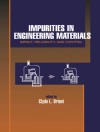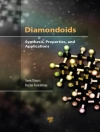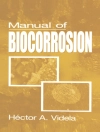The effect of polyvalent dopants on photoinduced defect formation was studied in different glasses. Ionization of the glass matrix results in intrinsic defects, positively charged hole and negatively charged electron centers. Polyvalent dopants can be photooxidized or photoreduced. These extrinsic defects might replace selectively one or several intrinsic defects and/or cause an increase in the number of opposite charged defects. Photoionization can also result in unusual dopant valences otherwise not observed in glasses.The systematic comparison of different dopants and glass systems irradiated by excimer lasers helps to understand defect generation processes and might eventually help in the design of UV-resistant or UV-sensitive glasses. Defect formation occurs in the ppm range and was analyzed by optical and EPR spectroscopy. A series of polyvalent dopants such as typical trace impurities, glass or melt additives and typical dopants used for optical components like filter glasses, optical sensors, fluorophores or photochromes, were studied. Distinct melting conditions give rise to different valences of various dopants and as a consequence different photoinduced redox-reactions might be observed after irradiation. Some dopants are photooxidized while others are photoreduced Some defects recombine easily or transform into more stable defects while others are stable for months or years.
Doris Ehrt & Doris Moencke
Photoionization of Polyvalent Ions [PDF ebook]
Photoionization of Polyvalent Ions [PDF ebook]
购买此电子书可免费获赠一本!
格式 PDF ● 网页 92 ● ISBN 9781617286612 ● 编辑 Doris Ehrt & Doris Moencke ● 出版者 Nova Science Publishers ● 发布时间 2018 ● 下载 3 时 ● 货币 EUR ● ID 7219910 ● 复制保护 Adobe DRM
需要具备DRM功能的电子书阅读器












